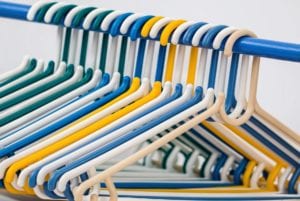Oil shows up in thousands of places besides your car’s fuel tank and engine. The average barrel of oil yields the following: gasoline (42%), diesel (20%), jet fuel (9%), heating oil (4.5%), heavy fuel oil (4.5%), liquefied petroleum gases (4.5%) and other products (16%). So, how does this impact you?
Throughout Your Home
Look in your closet, and you will find clothing made from petroleum-based fibers, including rayon, nylon, polyester and artificial furs. Look down at your floors, and you will likely find petroleum in the form of carpet, linoleum, or other synthetic flooring.

The kitchen is stocked with products that rely on petroleum: appliance casings, dishware, cooking utensils, ammonia, glue, tape, ink, candles, matches, shoe polish, dishwashing liquid, and many other cleaning products.
Transportation
While rising oil prices have a direct impact on when you buy gas for your vehicle, the indirect impact is felt throughout the economy. When an airline pays more for jet fuel, that cost may be passed on to consumers in the form of higher ticket prices or fuel surcharges. When the railroad and trucks that deliver food to the supermarket pay more for diesel fuel, the added cost shows up during checkout when you pay for your groceries.

The tankers that bring the oil to the U.S. from other foreign sources are paying more for their fuel, too. When oil goes up, in a sense we end up paying for the increase twice – once for the raw product and again to get it here so we can refine and use it.
Medicine
Petroleum is used in many of the medical products we take for granted. Visit any hospital or doctor’s office, and you will find these petroleum-based items: heart valves, artificial limbs, stethoscopes, syringes, hearing aids, vaporizers, anesthetics, antiseptics, operating gloves, and equipment tubing.

In the home, petroleum is a major component of many items found in medicine cabinets and on cosmetic stands: dentures, aspirin, nasal decongestants, rubbing alcohol, deodorants, cough syrup, bandages, burn lotions, antihistamines, allergy medications, vitamins, cologne, insect repellants, moisturizers, soaps and petroleum jelly.
Plastic is everywhere, and this carbon-based polymer compound is an essential part of everyday life. Walk through any store or supermarket, and you will find hundreds of items stored or packaged in plastic. Plastic is used in a wide range of products that require shaping and molding. These include computer housings, toys, eyeglass lenses, shingles, computer disks, athletic shoes, and thousands of other products.

The oil and gas industry does more than provide jobs; the industry provides the very necessities for life.


